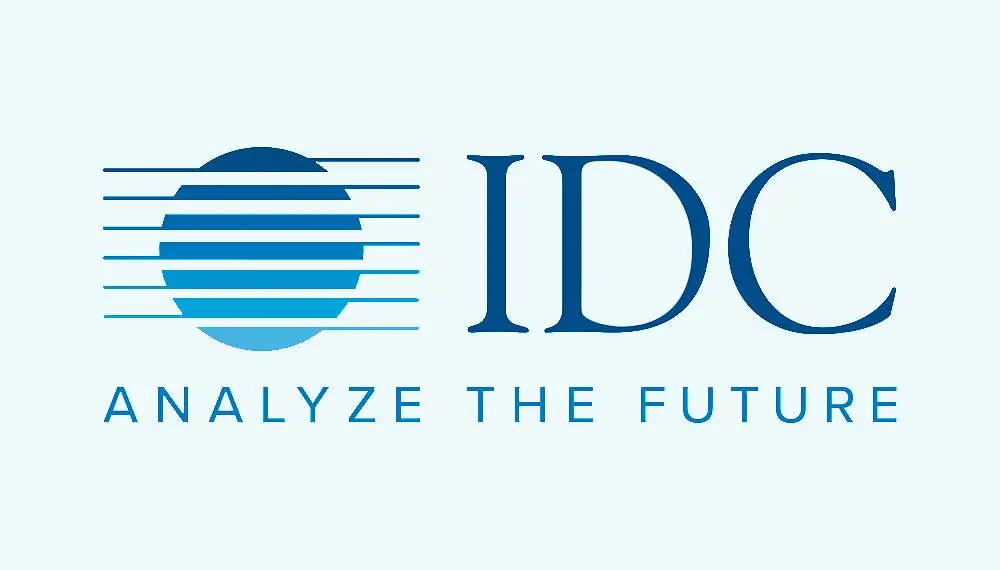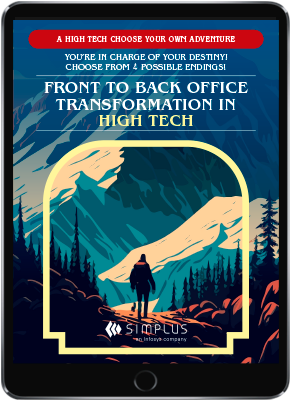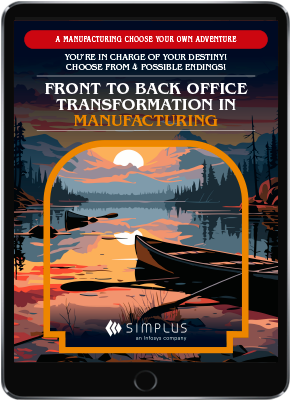The era of enterprise AI is upon us. Sales leaders aim to use the technology to close deals faster, enable more revenue, and protect margins. Customer service executives want to deliver more intelligent, proactive services, optimize costs, and enhance customer and partner experiences. CMOs want to use AI to personalize experiences at scale and maximize return on investment (ROI) and effectiveness for marketing campaigns. While CIOs push for faster development and quicker time to value.
Conversations with executives across industries and geographies reveal common themes: build trust in AI, scale AI across departments, and generate ROI quickly.
For this to happen, a roadmap must be put in place so that experimental AI point solutions lead to enterprise-wide system change (Figure 1).
This article explores two key areas companies must consider to deliver business value from enterprise AI investments.
- AI readiness and strategic assessment
- AI-first operating model at scale
Figure 1. The road to Salesforce-enabled AI

Source: Simplus, Fluido
Each step on the AI roadmap is necessary to scale transformation. But we’ve found that preparing enterprises for AI is a prerequisite for everything that comes after, and the right operating model ensures that value is delivered quickly and effectively across the enterprise.
AI readiness – companies are way behind
Recent research from the Infosys Knowledge Institute introduced a framework that simplifies and breaks down areas for organizations to build foundations for enterprise AI success.
This framework identifies and assesses AI readiness of enterprises across five dimensions (Figure 2).
Figure 2. The five dimensions of AI readiness

Source: Infosys Knowledge Institute
- Strategy. Alignment of resources and policies, with value of each use case confirmed before initiation.
- Governance. Rigorous processes to reduce AI-related ethical, brand, and legal risks.
- Talent. A well-trained, knowledgeable workforce with a solid understanding of AI.
- Data. Robust, high-quality data across all types.
- Technology. Foundational technology capabilities in place and readily accessible.
We found that just 2% of firms are ready on all five dimensions. Separately, on the strategic dimension, just 23% are ready, with governance at 21%, talent at 35%, data at 17%, and technology at 9%.
To get ready on the strategic dimension, involve cross-functional teams in the AI strategy development process. This can be executed by building an AI Value Office; this governs structure and AI’s impact on the modern data estate. Investments are prioritized for value, and only greenlighted when above a certain threshold, with outcomes tied to reputational, legal, and compliance risks.
For governance, similarly, firms should create a centralized responsible AI team to safeguard technical, legal, ethical, and reputational risks. Indeed, our research indicates that only about 10% of companies establish governance that provides these guardrails.
Only 35% of companies are ready on the talent dimension. This is partly due to inadequate knowledge and unfamiliarity with AI tools like Salesforce Einstein. Employees can become more adept at using these tools and deriving value from them through the concept of human-centric experience design.
Successful companies who have deployed AI across their workforce focus on the human experience through understanding key user journeys.
It might be that an AI intervention can improve how a user is interacting with a system or provide an insight or prompt that wasn’t possible in the past.
The lack of preparedness on the talent dimension is also due to insufficient training to upskill talent. Here, companies should create AI-led learning paths. At Infosys, proficiency is progressive, moving from AI Aware (almost all employees), AI Builder (larger number of practitioners proficient in software like Salesforce), and AI Master (small number of experts).
For the data dimension, companies should assess current systems, including hardware, applications, and integrations. They should also bring all data under management. This means organizing and fingerprinting data (capturing its essence without storing the data itself), and thinking about access controls, distribution and data rights management, and data governance to protect against IP, legal, and privacy breaches.
Finally, on the technology dimension, where only 9% of firms are ready, we recommend access to key technologies via a platform — a repository of self-service tools that provide AI capabilities, including machine learning frameworks and templates for developing AI agents and chatbots. Salesforce has a lot of strength here as its platform has a robust set of AI capabilities integrated into the platform. Salesforce low-code, no-code features from its Data Cloud and Einstein offerings enable rapid deployment of AI, especially for organizations who are already using core Salesforce clouds for their sales, service, marketing and quote-to-cash use cases. For others who are new to the Salesforce ecosystem and have developed their own data lakes, AI models, and large language models (LLMs), Salesforce Data Cloud’s “bring your own lake” (BYOL) and “bring your own model” (BYOM) architecture allows flexibility in how AI can be deployed.
AI-first operating model — the importance of design and product-centricity
AI readiness enables the next stages depicted in Figure 1 — rapid iterative design; AI build, implementation, and rollout; and adoption of new ways of working. The last stage is evolution and creation of a new digital operating model, at scale, for the AI era. This future-ready digital operating model allows swift transformation across businesses, which drives efficiency and growth. The model must be easily reconfigurable to meet emerging needs, which is achieved through its composable and software-driven nature. Developing it means thinking about how capabilities like Salesforce and other business components interact.
At Infosys, we recommend a five-pronged operating model (Figure 3), supported by shared digital infrastructure, partner ecosystem, and microchange management. While the three elements of data (+), talent (+), and engineering (+) (or technology) will have partly been addressed in the AI readiness stage, leading companies also pay special attention to design (+) and product (+).
Figure 3. A five-pronged digital operating model for the AI-first enterprise

Source: Infosys Knowledge Institute
Design+ orchestrates interactions with intelligent AI systems like Salesforce Einstein. To do this well, design ethics move beyond usability and accessibility to encompass AI fairness, safety, transparency, and data privacy.
Product+ means going product-centric for speed and innovation. Organizations that are truly AI-first are organized around flow of value. This means reimagining business and technology capabilities as products aligned to customer journeys and associated value streams. Importantly, the product is a service, capability, or experience that creates value.
The product-centric model enables rapid iterations and incremental delivery of value. Just like the strategic value office in the readiness stage ensures the right AI use case is chosen, the product-centric model enables organizations to adjust course if things go wrong. The model provides a view of the entire use case life cycle, with a focus on delivering business outcomes.
And businesses in our studies are taking note. When asked how they measure ROI of their AI initiatives, they more often measure business value rather than metrics like volume or speed. This means they stay in step with the wider market, continue to compose an enterprise vision, foster a culture of innovation and experimentation, and support a thriving platform ecosystem. Whether using Salesforce or another platform, the model helps organizations to create new market services and increase efficiencies and scale.
The path of the ambitious innovator
In other research conducted by Infosys, we spoke to more than 30 executives and identified four archetypes based on company culture and leadership mindset: Ambitious Innovators, Frustrated Mavericks, Cautious Explorers, and Worried Conformists. Each archetype exhibited different levels of technology implementation and risk exposure.
Those out ahead (the Ambitious Innovators) approached things differently from the rest. Their leadership and organizational culture were aligned to bring AI transformation and make enterprise AI a reality. They saw AI as a big bet, and were fully on board, no matter the cost. This meant they were already making big decisions on all five AI readiness dimensions and identifying gaps that could be plugged by using new digital technologies like Salesforce.
One such example is an American multinational telecommunications company we worked with. Now, more than five years into their AI transformation (which started with the question, “How can we become an AI-first organization and enable employees to be more efficient, creative and innovative?”), they are seeing good results, with estimated annual savings of $30 million since 2022.
The enterprise first focused on the technology dimension (the most unready dimension in our analysis), implementing AI-based solutions for their tech teams and building key technology capabilities in the cloud, including Microsoft and Salesforce. But they didn’t stop there, moving through all stages in Figure 1 to arrive at a digital operating model for the AI-first era.
By putting all ideas through a strategic readiness framework, they identified more than five business areas that AI could transform for their staff efficiency and customer experience, and focused efforts on the necessary changes needed in technology and data. By evolving a product-centric SAFe Agile-based construct, they identified the teams (or “pods”) needed to deliver solutions at scale and had both a leader from technology and business to work together, erasing the distinction between business and tech. They partnered with Infosys for their design studios and delivery centers based in Texas and Bengaluru to create more robust architecture and flexible, speedy, and innovative platform capabilities.
This telecom multinational is truly an ambitious innovator. For firms to follow suit, the C-suite is all important, both for the AI preparation journey and the move to a design-centric, product-led digital operating model.
The good news is, like leadership at this telco, other Infosys Knowledge Institute research into generative AI found that CEOs and CIOs already sponsor AI initiatives in over a quarter of businesses in the US and Europe. Such commitment and leadership nurture an AI-readiness strategy, committed resources, and scaled adoption of this general-purpose, transformative technology.






















































0 Comments